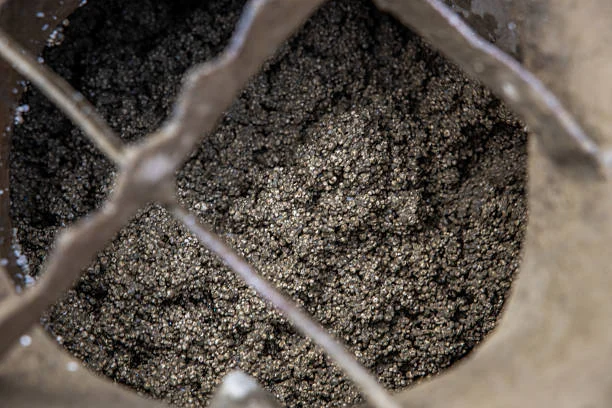
Introduction
Sodium cyanide (NaCN), an inorganic compound, plays a pivotal role in the Metallurgical industry. Despite its highly toxic nature, its unique chemical properties make it indispensable in several metallurgical processes, especially in the extraction of precious metals. This article delves into the various applications of Sodium cyanide in metallurgy, exploring its working mechanisms, advantages, and associated challenges.
Chemical Properties of Sodium Cyanide Relevant to Metallurgy
Sodium cyanide is a white, water-soluble solid. In an aqueous solution, it dissociates into sodium ions (Na⁺) and cyanide ions (CN⁻). The cyanide ion is of particular importance in metallurgy. It is a strong nucleophile, which means it has a high affinity for positively charged metal ions. This property allows cyanide ions to form stable complexes with metal ions, a characteristic that is exploited in various metallurgical applications.
Applications in Precious Metal Extraction
Gold Extraction
Cyanidation Process: The most well - known use of Sodium Cyanide in metallurgy is in the extraction of gold from its ores. The Cyanidation process, also called the MacArthur - Forrest process, was developed in the late 19th century and remains the dominant method for Gold extraction worldwide. In this process, crushed gold ore is leached with a dilute solution of sodium cyanide, typically in the range of 0.05 - 0.2% concentration. During this process, metallic gold reacts with oxygen and sodium cyanide in the aqueous solution. The reaction results in gold forming a soluble complex known as sodium aurocyanide. This complex can then be separated from the remaining ore matrix. After the leaching step, the gold is recovered from the solution. One common method is through the use of activated carbon, where the gold - cyanide complex is adsorbed onto the carbon (a process called carbon - in - pulp or CIP). Subsequently, the gold is desorbed from the carbon and further refined to obtain pure gold.
Advantages in Gold Extraction: Sodium cyanide is preferred in gold extraction for several reasons. It is highly effective in dissolving gold even from low - grade ores, which are often the norm in modern mining. The process is relatively simple and cost - effective compared to some alternative methods. Its ability to form stable complexes with gold allows for efficient separation of gold from other minerals present in the ore.
Challenges and Environmental Concerns: However, the use of sodium cyanide in gold extraction is not without its challenges. Its extreme toxicity is a major concern. If not properly managed, sodium cyanide can pose a significant threat to human health and the environment. In the event of a spill or leakage, cyanide can contaminate water sources, killing aquatic life. Additionally, the disposal of cyanide - containing tailings, which still contain small amounts of cyanide and other heavy metals, is a complex issue. Stringent environmental regulations have been put in place in many countries to ensure the safe handling and disposal of sodium cyanide in the gold mining industry.
Silver Extraction
Similar Cyanide - Based Processes: Sodium cyanide is also used in the extraction of silver from its ores. The principles are similar to those in gold extraction. Silver ores are treated with a sodium cyanide solution, and the silver forms a soluble cyanide complex. The silver - cyanide complex can then be processed further to recover pure silver. The recovery methods can include precipitation, electrolysis, or adsorption onto suitable media, similar to the processes used for gold recovery.
Role in Complex Ores: In many cases, silver is found in complex ores along with other metals such as lead, zinc, and gold. Sodium cyanide can selectively dissolve silver, allowing for its separation from the other components. This is especially important in maximizing the value of the ore and ensuring efficient extraction of all valuable metals.
Applications in Metal Plating
Electroplating: In the electroplating industry, sodium cyanide is used in the plating of metals such as copper, silver, cadmium, and zinc. In a cyanide - based electroplating bath, sodium cyanide serves multiple functions. It acts as a complexing agent, which helps to control the deposition of metal ions on the substrate. For example, in copper electroplating, copper ions in the solution form complexes with cyanide ions. The complexed copper ions are then reduced at the cathode (the object to be plated) to form a copper deposit. The presence of cyanide in the plating bath can improve the quality of the plating by reducing the rate of metal deposition, resulting in a more uniform and adherent coating.
Advantages in Plating: Cyanide - based electroplating baths offer several advantages. They can provide better throwing power, which means that the metal is deposited more evenly on complex - shaped objects. The use of sodium cyanide can also enhance the brightness and smoothness of the plated layer. However, due to the toxicity of cyanide, there is a growing trend to develop alternative non - cyanide electroplating processes. But in some applications where high - quality plating is required, such as in the jewelry and electronics industries, cyanide - based electroplating with sodium cyanide is still used.
Applications in Metal Refining and Purification
Removal of Impurities: Sodium cyanide can be used in the refining of certain metals to remove impurities. For example, in the refining of nickel, cyanide can be used to selectively precipitate impurities such as copper and zinc as their respective cyanide complexes. These metal - cyanide complexes of the impurities can then be separated from the nickel solution through filtration or other separation techniques, leading to a purer nickel product.
Purification of Precious Metals: In the purification of precious metals like gold and silver after extraction, sodium cyanide can be used in further refining steps. For instance, it can be used to dissolve and remove any remaining base metal impurities that were not completely separated during the initial extraction process. This helps to achieve a higher purity level of the precious metals, which is crucial for applications in jewelry, electronics, and investment purposes.
Future Perspectives and Alternatives
Search for Cyanide - Free Alternatives: Due to the toxicity and environmental risks associated with sodium cyanide, there is a significant research effort to develop alternative methods for metal extraction and processing. In the gold mining industry, for example, several cyanide - free leaching agents are being investigated, such as thiosulfates, halides, and certain organic compounds. These alternatives aim to provide similar or better extraction efficiencies without the associated environmental and safety hazards of cyanide. However, many of these alternatives are still in the experimental or early - stage commercialization phase and face challenges such as higher costs, lower selectivity, or complex processing requirements.
Improved Safety and Environmental Management: In the meantime, the metallurgical industry is focusing on improving the safety and environmental management of sodium cyanide use. This includes the development of better handling and storage systems, more efficient treatment of cyanide - containing waste, and enhanced monitoring to ensure compliance with environmental regulations.
- Random Content
- Hot content
- Hot review content
- Collector BLK-301/Composite Flotating Active Matter ≥60%
- Butylammonium black medicine/Ammonium Di(Iso)butyl Dithiophosphate 91%
- Food Grade Heavy Light Precipitated Calcium Carbonate Powder Granular 99%
- Food Grade Ammonium Sulphate
- Food grade Antioxidant T501 Antioxidant 264 Antioxidant BHT 99.5%
- Adipic acid 99% used as the material of nylon 66
- Ethylene carbonate
- 1Discounted Sodium Cyanide (CAS: 143-33-9) for Mining - High Quality & Competitive Pricing
- 2Sodium Cyanide 98% CAS 143-33-9 gold dressing agent Essential for Mining and Chemical Industries
- 3Sodium Cyanide 98%+ CAS 143-33-9
- 4China's New Regulations on Sodium Cyanide Exports and Guidance for International Buyers
- 5Anhydrous Oxalic acid 99.6% Industrial Grade
- 6Oxalic acid for mining 99.6%
- 7Reagent Grade/Industrial Grade Hydrochloric Acid min.31%
- 1Sodium Cyanide 98% CAS 143-33-9 gold dressing agent Essential for Mining and Chemical Industries
- 2High Quality 99% Purity of Cyanuric chloride ISO 9001:2005 REACH Verified Producer
- 3 High-Quality Sodium Cyanide for Leaching
- 4Powdery emulsion explosive
- 5Industry Grade Electron grade 98% Sulfuric Acid H2SO4 Sulphuric Acid Battery Acid Industrial Sulfuric Acid
- 6Colloidal emulsion explosive
- 7sodium hydrosulfide 70% flakes used Mining Industry











Online message consultation
Add comment: